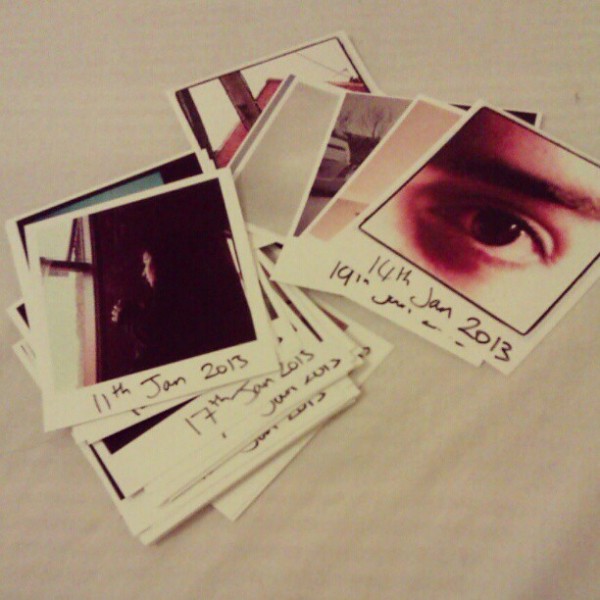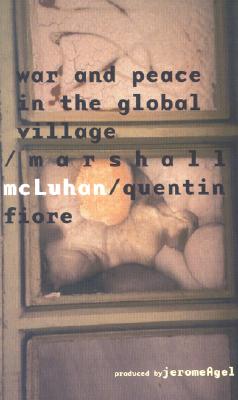All posts in category 350MC Working with Photography in context
Instagram : Fixing the Fluid Image
Posted by seancarroll89 on February 19, 2013
https://seancarroll89.wordpress.com/2013/02/19/instagram-fixing-the-fluid-image/
Bibliography
Bibliography
ADR Studio Design (May 14th 2012) Instagram Socialmatic Camera Overview, Available at: http://www.youtube.com/watch?feature=player_embedded&v=P75rw0bgBkk (Accessed: 15th Dec 2012).
Alexander, A (2009) [Image] Polaroid: Dock, Available at:http://www.flickr.com/photos/asalexander/3504430020/ (Accessed: Dec 3rd 2012).
Bonanos, C (April 13th 2012) Instantly Old The retro mojo of Facebook’s shiny new toy., Available at:http://nymag.com/news/intelligencer/instagram-2012-4/ (Accessed: 1st Dec).
Bustillos, M (Sept 18th 2012) Everyone shoots first: reality in the age of Instagram, Available at:http://www.theverge.com/2012/9/18/3317324/hall-of-mirrors-remaking-reality-camera-obsessed-world (Accessed: Dec 16th 2012).
Charlie, A (2012) Has the Rise of Social Meant the Death of Journalism?, Available at:http://www.siliconbeachtraining.co.uk/blog/social-journalism/(Accessed: 24th Jan 2013).
Davidson, B (July 2012) reFramed: In conversation with Richard Koci Hernandez, Available at:http://framework.latimes.com/2012/07/04/reframed-in-conversation-with-richard-koci-hernandez/#/0 (Accessed: Dec 17th 2012).
Elizabeth Guffey (2006) Retro: The Culture of Revival (Reaktion Books – Focus on Contemporary Issues), UK: Reaktion Books.
Estrin, J (May 2nd 2012) Ben Lowy: Virtually Unfiltered, Available at: http://lens.blogs.nytimes.com/2012/05/02/ben-lowy-virtually-unfiltered/ (Accessed: 28th Nov 2012).
Estrin, J (Sept 17th 2012) Picturing Everyday Life in Africa,Available at: http://lens.blogs.nytimes.com/2012/09/17/picturing-everyday-life-in-africa/ (Accessed: Jan 5th 2013).
Estrin, J (Sept 7th 2012) In an Age of Likes, Commonplace Images Prevail, Available at: http://lens.blogs.nytimes.com/2012/09/07/in-an-age-of-likes-commonplace-images-prevail/ (Accessed: Dec 7th).
Foam Fotografie Musuem (2011) ‘What’s Next?’ Fred Ritchin,Available at: http://www.youtube.com/watch?v=zKVjSwYsIak(Accessed: Nov 23rd 2012).
Frank, S (2013) The Polaroid genius who re-imagined the way we take photos, Available at: http://www.bbc.co.uk/news/magazine-21115581 (Accessed: 25th Jan 2013).
Garber, M (April 10th 2012) A Guide to the Instagram Filters You’ll Soon Be Seeing on Facebook, Available at:http://www.theatlantic.com/technology/archive/2012/04/a-guide-to-the-instagram-filters-youll-soon-be-seeing-on-facebook/255650/(Accessed: 1st December 2012).
Gordon, G (Sept 4th 2012) Hipstamatic Revolution, Available at:http://www.guernicamag.com/art/hipstamatic-revolution/(Accessed: Dec 28th 2012).
Hepburn, N (2012) [image] How to download your entire Instagram account, Available at:http://www.deathandtaxesmag.com/192523/how-to-download-your-entire-instagram-account/ (Accessed: 29th Dec 2012).
Huffington Post (2012) Delete Instagram: How To Download Your Photos, Kill Your Account And Find Alternatives, Available at:http://www.huffingtonpost.com/2012/12/18/delete-instagram-download-photos_n_2322656.html (Accessed: 3rd Jan 2013).
Kavner, L (18th Sept 2012) Instagram: Photography’s Antichrist, Savior, Or Something In Between?, Available at:http://www.huffingtonpost.com/2012/09/18/instagram-photography_n_1893230.html (Accessed: Dec 16th 2012).
Laurent, O (3rd Sept 2012) The New Economics of Photojournalism: The rise of Instagram, Available at: http://www.bjp-online.com/british-journal-of-photography/report/2202300/the-new-economics-of-photojournalism-the-rise-of-instagram (Accessed: 6th Jan 2013).
Li, A (Nov 17th 2012) Is Photography Dead? A History From Early Cameras to Instagram [INFOGRAPHIC, Available at:http://mashable.com/2012/11/17/photography/ (Accessed: 3rd Dec 2012).
Marshall McLuhan (2001) War and Peace In the Global Village, California, USA: Gingko Press.
Mayes, S (2012) From Memory To Experience: The Smartphone, A Digital Bridge, Available at:http://www.jenshaas.com/2012/10/10/from-memory-to-experience-the-smartphone-a-digital-bridge/ (Accessed: 5th Jan 2013).
Murabayashi, A (Apr 30th 2012) Why Instagram is Terrible for Photographers, and Why You Should Use It, Available at:http://blog.photoshelter.com/2012/04/why-instagram-is-terrible-for-photographers-and-why-you-should-use-it/ (Accessed: Dec 14th).
Murabayashi, A (Sept 26th 2012) Instagram Isn’t an App, It’s a Publishing Platform (So Treat It Like One), Available at:http://blog.photoshelter.com/2012/09/instagram-isnt-an-app-its-a-publishing-platform-so-treat-it-like-one/ (Accessed: Dec 14th 2012).
Nancy Martha West (2000) Kodak and the Lens of Nostalgia (Cultural Frames, Framing Culture), USA: University of Virginia Press.
O’Hagan, S (6th Sept 2009) Now smile… it’s the last Polaroid picture show, Available at:http://www.guardian.co.uk/artanddesign/2009/sep/06/polaroid-project-sean-ohagan (Accessed: 5th Dec 2012).
Panzer, M (Sept 19th 2012) Magnum Irrelevant?, Available at:http://online.wsj.com/article/SB10000872396390443884104577645882307821656.html?mod=WSJ_ArtsEnt_LifestyleArtEnt_4 (Accessed: Jan 3rd 2013).
Petrusich, A (Apr 24th 2012) Instagram, The Nostalgia Of Now And Reckoning The Future, Available at:http://www.buzzfeed.com/petrusich/instagram-the-nostalgia-of-now-and-reckoning-the (Accessed: Jan 13th 2013).
Printstagram (2012) Printstagram memory box, Available at:http://printstagr.am/memorybox/ (Accessed: 8th Dec 2012).
Roland Barthes (1982) Camera Lucida: Reflections on Photography, : Vintage/Ebury (A Division of Random House Group).
Stanmeyer, J (2012) Instagram — It’s About Communication,Available at: http://stanmeyer.com/blog/3032/instagram-its-about-communication/ (Accessed: Nov 30th 2012).
The Impossible Project (8th Oct 2012) The Impossible Instant Lab : turn iphone images into real photos, Available at:http://www.kickstarter.com/projects/impossible/impossible-instant-lab-turn-iphone-images-into-rea (Accessed: 5 Dec 2012).
Wender, J (Sept 24th 2012) STEFANO DE LUIGI’S IDYSSEY,Available at:http://www.newyorker.com/online/blogs/photobooth/2012/09/stefano-de-luigis-idyssey.html (Accessed: Nov 23rd 2012).
Wortham, J (June 3rd 2011) A Stream of Postcards, Shot by Phone,Available at:http://www.nytimes.com/2011/06/04/technology/04photosharing.html?_r=0 (Accessed: 1st Dec 2012).
Zhang, M (Dec 2 2012) Carbon One Mini is a Polaroid One Step Look-Alike Digital Camera, Available at:http://www.petapixel.com/2012/12/02/carbon-one-mini-is-a-polaroid-one-step-look-alike-digital-camera/ (Accessed: Dec 12th 2012).
Posted by seancarroll89 on February 11, 2013
https://seancarroll89.wordpress.com/2013/02/11/bibliography/
Final Symposium Script
This is my Final script for my Symposium. I plan to Paraphrase a lot of this and have it sectioned out into small paragraph which will be on prompt cards rather than a large chunk of text on A4 paper. I want to try and not be too attatched to the script and be free to try and engage with the audience a little.
Introduction.
So what is Instagram? For those who don’t know and for those who do let’s take ourselves through its process.
Instagram is a smart phone application which is currently limited to Iphone and Android but it allows the user(me) to take a Photograph and instantly upload and share it online with their network of followers. The Sharing of these images is very much based on the design of social networks where there is a constant ‘stream’ or ‘feed’ of information. With Instagram this information is Images.
(So we’ll take myself as the User) Photo – So I take a photo, I can choose to title it or not, in this case I did and the title is bookshelf skeleton.
And with this image I also choose to categorise what themes are in this image, and you do this with your hashtag.
Categorise # – so we’ll take this tag #window….and we can see that how many images are in that category- 1,512,644 images that share that #. Lets take a look at another one #picoftheday ……………..54,122,750…….and then top 5 tags… love…..
So we can see that people who search and follow these categories are going to potentially be exposed to your images if you categorise them with the use of #tags.
Number of Instagram users – Number of Photos – so its not hard to believe that 10% of all Photographs ever taken were taken in 2011.
one thing we’ve missed out…the filters…. http://www.theatlantic.com/technology/archive/2012/04/a-guide-to-the-instagram-filters-youll-soon-be-seeing-on-facebook/255650/ ß– website for the filters image.
http://www.nytimes.com/2011/06/04/technology/04photosharing.html?_r=0
When we talk about an Instagram filter, what do we mean? First we understand we take a Photograph and then Instagram provides us with an optional editing process.
It gives us a set of ‘filters’ which are almost like a controlled, designed editing process which are branded down to a quirky name like X-Pro or Nashville which all do something different to the image. We can then apply this look or Editing process to one of our Photographs which then enhances it.
Kevin Systrom co-founder of instagram in an Article for The NY Times said: “We set out to solve the main problem with taking pictures on a mobile phone,” he said, which is that they are often blurry or poorly composed. “We fixed that.”
The filters that are there for us to use are often seemingly designed on old film and processing aesthetics, With One tap on the screen you can turn your Digital Mobile Phone Photograph into a Handmade Analog Darkroom Print and its instantly ready to share online.
There seems to be a pursuit for Nostalgia. ******Like Stephen Mayes has said ‘’We’re embracing the cellphone, but desperately trying to link it to what we know, our histories and what is familiar’’And why is this? Mnemonic? (intended to assist in memory or assisting the memory******http://nymag.com/news/intelligencer/instagram-2012-4/ Well aesthetically it looks good, it’s quirky, it’s retro and cool but ultimately it takes us back to a time when we can remember interacting with the single artefact and the experience of it’s aesthetic. Whether you can remember handling, viewing and smelling the old Family photographs your Grandmother keeps in a shoe box or shaking a Polaroid Picture it’s this Nostalgia which helps us understand the potential of Mobile Phone Photography and also Instagram because it simply gets us producing more Images.
Nostalgia Definition
*Photographs Mnemonic to Nostalgia/Memory*
*Kodak selling the idea that the Consumers or users memory itself is unreliable and that a Photograph itself will Capture that Memory better, they were selling the memory, we were sold the memory which encouraged us to cherish the analog image. And now over time the nostalgia has also become about the medium and not just the memory we captured in the photograph.
Nancy martha west quote*-*”Kodak systematically urged it’s consumers to view Photography and the world it recorded through the lens of nostalgia.”
We practice and experiment with familiar medium in order to adapt to the new medium. When we talk about the Single artefact and these Old Analog Images, we are talking of the ‘Fixed Image’ you can touch it, hold it, frame it on your wall, you can smell it and if you want to you can EAT it. It’s fixed, its negotiated by time and space, whereas when we talk of the Digital Image and especially with Instagram we are talking about the ‘Fluid Image’ Fred Ritchin describes this fluid image as “Quantum imagery.” which expanded on by Stephen Mayes he says…’’ Digital photography is anything and everything at any single moment; it has contradictory meanings all at once’’.
Polaroid pic link http://www.flickr.com/photos/asalexander/3504430020/
Instagram is a perfect example of the ‘Fluid Image’ in a very literal sense. There have been arguments over Instagram being the death of photography, similar to the arguments of twitter being death to journalism. But surely as practitioners we should be asking instead how can we use this platform to benefit our practice? Instead of hammering the first nail in the coffin. Instagram is not necessarily based on the actual photograph but simply on the sharing and the social media platform.
Let’s take Facebook and its news feed which is populated by your friends activities as a way to understand it.
You read a status from someone who you most probably don’t really know but maybe you do. It will probably hang around for about a day or so, but after a week…it’s gone it’s in the stream, it’s fluid, and you probably forgot that it ever had existed. And this is the same for Instagram, except the Status is a Photograph. It is uploaded for Immediate Feedback or immediate response, Immediate likes and shares. It has not been produced to be fixed. So we can start to Understand why Fred Ritchin and Stephen Mayes and other Theorists are stating that Digital Photography is it’s own medium.
‘When we first invented the Automobile, we called it the Horseless Carriage, we still have Horsepower in our cars, but the car has nothing to do with horses.’’
‘Digital Photography has very little to do with what we think of as Photography’ Fred Ritchin
So why are we beginning to fix the fluid image? Especially these Images which have been created and designed on a Digital Platform for Digital Use. We’ve Digitalised the Negative and now we want to Negatize the Digitive? Or should i say Fix The Fluid Image
Christopher Bonanos in an article for the NYmagazine said
‘Instagram is tapping the sense—a sense that has almost been lost—that a photograph is itself a precious object.’ Christopher Bonanos http://nymag.com/news/intelligencer/instagram-2012-4/
So if we think about this in the idea of nostalgia , by using the filters and the analog edit to the digital photograph we are reconnecting with older image making processes and systematically reconnecting with the Single Artefact. And the importance that it is fixed, and what we know and remember of a fixed image.
An example of this is the Impossible Film Project who purchased an old Polaroid Factory to attempt to start making and producing their own polaroid film for an estimated 300,000,000 still working and existing Polaroid Cameras. In 2011 they sold just under 1,000,000 Packs of new Polaroid Film. And now from October 2012 they raised Funding through a Kickstarter project to begin the production of ‘The Impossible Instant Lab’ to introduce to the Market this year. This Prints digital images as Polaroid prints straight from your Iphone. This is Fixing the Fluid Image.
Printstagram is another example, but they specialise in the printing of Instagram Photos specifically. With many different products and packages but in this case ‘the memory box’ Promoting the physical Photo Album the physical document, prints of
all the Photos you have ever taken on Instagram . You can even ‘double prints for sharing’ rather than having your image shared with potentially millions of users on Instagram. It denies the possibilities of the quantum digital image in favour of the printed, fixed destructible analog one.
By the time this year is over there will also be a prototype ‘SocialMatic Camera’ which is a fully functioning Instagram Digital Camera which Prints an Instagram Image. Think of it as an App in a camera’s body. But it does give you a print. This also is another new product which Fixes the Fluid Image.
SO why do we want these Images in our Hands, Shoeboxes, Pockets, Wallets.
If you all take a moment to look under your seat you should find blu-tac’d, a print. take a moment to look at it and feel it in your hands, get to know it. Understand it as a fixed image. For this Symposium i have been an active user of Instagram for 4 months and the image you hold will be one of the ones i have taken over this period. These Images are now forgotten, they’re in the stream and some of them have been for months now. This Image is yours to keep and for you to do what you want with it. The reason why this Physical Artefact is so Special is down to the Provenance of it. the meaning. You can see that it is Handmade with Handwriting. This is shared from a Human and not a Cyborg. When you look at the photograph you are holding in the future you will remember today, and that I shared it with you and the manner that i shared it in. Its unique. I can’t share this in the same way with you on the Internet because on the internet there is a lack of provenance and a wealth of information. You now have control over this Photograph unlike it’s Fluid form on the Internet. This Photograph will now have a place negotiated by time and space and will become mnemonic to memory, making it harder to forget it. I believe the reason why the Artefact is so Attractive In the Fluid Digital World and the reason why we want to start holding our Images again is simply because we’ve experienced the Fluid. We experience it Everyday and as humans we feel there is something missing in that world through the screens. Marshall Mcluhan Once Said: ‘One thing about which fish know exactly nothing is water’ Meaning they haven’t experienced the Dry so how can they know that they are in Water. We have experienced the Fluid, we have experienced the Water, the stream, the news feeds, the digital. But we have also experienced the Dry. The Analog, the Artefact, The Photographic Print, and i believe that the Fluid Digital Environment has given us the alternative to realise the importance of the Fixed Image.
Thank you, and if you have a twitter account and would like to drop some feedback on your thoughts on the Fixed Image and the print you have just received please #hastag rawfmt and start a conversation
Thank you.
Posted by seancarroll89 on February 9, 2013
https://seancarroll89.wordpress.com/2013/02/09/final-symposium-script/
Final Presentation Slideshow
Instagram – Fixing the Fluid Image
Here is the Pdf of my final Presentation. I have chosen to go with a plain white background to give a clean and simple look. I have tired to make a few pages work with some nice transitions so there is movement on the creen which i can talk over. I have used a lot of Imagery and mainly Imagery that i have produced with my time using Instagram. I have chose the ‘courier new’ text to try and reference the electronic age with a generic nostalgic typing font.
Posted by seancarroll89 on February 9, 2013
https://seancarroll89.wordpress.com/2013/02/09/final-presentation-slideshow/
Marshall Mcluhan
‘One thing about which fish know exactly nothing is water’
I have taken this quote from Fred Ritchin’s After Photography but i know that it is a Marshall Mcluhan Quote. I have found tha it has come from this book:
http://en.wikipedia.org/wiki/War_and_Peace_in_the_Global_Village
Now this is a book i donthave time to go into too much depth. I have read a little bit from it but i only really need that Quote to solidify my conclusion at the end of my symposium.
I can use it to state that we have experienced both the Fluid and Fixed Environment and thats the reason why we want to start holding our images again, is becasue something is missing from just interacting with Images Online. We are Fixing the Fluid Image becasue we are starting to learn and understand that the Analog and the Digital are beneficial for Photography working and Co-exisiting together rather than being seperate. By experiencing the Fixed we can learn how to optimise the benefits of the Fluid and by expereincing the Fluid we can understand and learn to optimise the importance of the Fixed Image in our practice.
Posted by seancarroll89 on February 7, 2013
https://seancarroll89.wordpress.com/2013/02/07/marshall-mcluhan/
Syposium Practice – Recording
W made recordings of our practice Symposium run throughs and this has given me the opportunity to hear myself back and make any adjustments i need to make. I can hear that i speak quite slow and it is obvious that i am a little unconfident with my script. I also feel that even though it is already over 10 minutes long i need to put more information into it. I think i need a little bit of definition on Nostalgia to clear that section up and form a good stance for the audience to follow. If i speed up in my talking and the delivering of nformation hopefully i will have enough room to add an extra minute of information.
Posted by seancarroll89 on January 25, 2013
https://seancarroll89.wordpress.com/2013/01/25/syposium-practice-recording/
Camera Lucida – Roland Barthes
I have selected a few quotes which i have found ineresting from Camera Lucida. I have tried to relate them to Instagram and the direction i am taking with my research but i have found this very hard to do. I appreciate the way in which Barthes Talks of the photograph but he is focused on the fixed image. There are certain aspects which do cross over and appeal to me when thinking about the fixed image being defined in reference and in co-existence to the fluid image but i havent gained anything i can directly put into my symposium. It has benefitted me though and has informed the way i shall talk about the fixed image. The Photographic Print.
“What the Photograph reproduces to infinity has occurred only once: the Photograph mechanically repeats what could never be repeated existentially.”
”When we define the Photograph as a motionless image, this does not mean only that the figures it represents do not move; it means that they do not (i)emerge(i), do not (i)leave(i): they are anesthetized and fastened down, like butterflies.”
“The Photograph is an extended, loaded evidence — as if it caricatured not the figure of what it represents (quite the converse) but its very existence … The Photograph then becomes a bizarre (i)medium(i), a new form of hallucination: false on the level of perception, true on the level of time: a temporal hallucination, so to speak, a modest (o)shared(i) hallucination (on the one hand ‘it is not there,’ on the other ‘but it has indeed been’): a mad image, chafed by reality.
“In an initial period, Photography, in order to surprise, photographs the notable; but soon, by a familiar reversal, it decrees notable whatever it photographs. The ‘anything whatever’ then becomes the sophisticated acme of value.”
“A paradox: the same century invented History and Photography. But History is a memory fabricated according to positive formulas, a pure intellectual discourse which abolishes mythic Time; and the Photograph is a certain but fugitive testimony; so that everything, today, prepares our race for this impotence: to be no longer able to conceive duration, affectively or symbolically: the age of the Photograph is also the age of revolutions, contestations, assassinations, explosions, in short, of impatiences, of everything which denies ripening.”
”but by shifting this reality to the past (‘this-has-been’), the photograph suggests that it is already dead.”
”Usually the amateur is defines as an immature state of the artist: someone who cannot — or will not — achieve the mastery of a profession. But in the field of photographic practice, it is the amateur, on the contrary, who is the assumption of the professional: for it is he who stands closer to the (i)noeme(i) of Photography.”
Posted by seancarroll89 on January 22, 2013
https://seancarroll89.wordpress.com/2013/01/22/camera-lucida-roland-barthes/
Fixing my own Fluid Images
 I have decided that it would be a good idea to Print my Instagram Images that i have taken over the past 3-4months. This is something i could then share with the Audience in my Symposium. I could somehow give them each a unique print which would tie in nicely for me to make a conclusion on what i have found from my research and also finish off my Symposium. I have decide to print them off in a way to reference a Polaroid Photograph so that it will hold some esemblence an dprove feelings of Nostalgia and similarity to the Polaroid. I have also chosen to provide the date on the Image in an extra attempt to fix it by a time and a place to affirm it’s idea as a fixed Image. Now it is in Print form it is no longer fluid and therefore the date becomes relevant.
I have decided that it would be a good idea to Print my Instagram Images that i have taken over the past 3-4months. This is something i could then share with the Audience in my Symposium. I could somehow give them each a unique print which would tie in nicely for me to make a conclusion on what i have found from my research and also finish off my Symposium. I have decide to print them off in a way to reference a Polaroid Photograph so that it will hold some esemblence an dprove feelings of Nostalgia and similarity to the Polaroid. I have also chosen to provide the date on the Image in an extra attempt to fix it by a time and a place to affirm it’s idea as a fixed Image. Now it is in Print form it is no longer fluid and therefore the date becomes relevant.
Here is a selection of 24 images from 57 that i have printed.
Posted by seancarroll89 on January 20, 2013
https://seancarroll89.wordpress.com/2013/01/20/fixing-my-own-fluid-images/
Kodak and the lens of Nostalgia – Nancy Martha West
I decided to research more into the Idea of Nostalgia and where the Nostalgia of photographs has come from. I find that Instagram is using the filters and Analog edits to the digital images as a marketing ploy, something which gets us using Instagram more. Which gave me an idea to look into how Kodak as an example marketed themselves throughout the 20th century. I came across this book Kodak and the lens of Nostalgia by Nancy Martha West, and it througouly explains how kodak used deas of Nostalgia in their Advertising Campaigns as far back as World War I.
‘So it is astonishing when somehow the mnemonic potential of the objects fndamental to an entire social formation turns up raidcally disrupted or disabled. Then the Object in it’s ‘metaphysically’ enigmatic commodity form mutates into a privalaged icon symbolizing the whole crisis of memory and the sudden opacity of the past’
‘As Spitzer so poignantly demonstrates, the nostalgia exemplified by the uses of photography does not neccessarily entail retreat; it can equally function as retrieval, as a means of reclaiming the past and even shaping the future.
‘Kodak Advertising insisted on a nostalgic view of the world. Kodaks accent on memory intensified.’
‘photography then about it’s capacity for mnemonic labour’
‘kodak systematically urged it’s consumers to view photography and the world it recorded through the lens of Nostalgia’
Posted by seancarroll89 on January 20, 2013
https://seancarroll89.wordpress.com/2013/01/20/kodak-and-the-lens-of-nostalgia-nancy-martha-west/
Carbon one mini
Here is another example i have found of a polaroid instant Digital Camera. http://www.petapixel.com/2012/12/02/carbon-one-mini-is-a-polaroid-one-step-look-alike-digital-camera/
Posted by seancarroll89 on January 13, 2013
https://seancarroll89.wordpress.com/2013/01/13/carbon-one-mini/






























